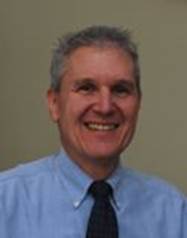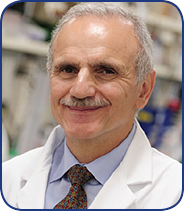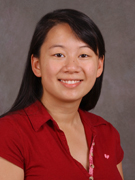 Calendar year 2015 brings great promise for Stony Brook Medicine. And while a cold winter is upon us, the glow from all the activities of all our students, staff and faculty is a reminder that the best is yet to come for the School of Medicine.
Calendar year 2015 brings great promise for Stony Brook Medicine. And while a cold winter is upon us, the glow from all the activities of all our students, staff and faculty is a reminder that the best is yet to come for the School of Medicine.
With the launch of our new LEARN curriculum and Fall semester behind us, the curriculum committee and its relevant subcommittees continue to use the experiences of students and faculty to improve the length of courses, their composition and our grading practices, so as to enhance the active learning and team-based educational principles of LEARN.
In the faculty realm, we continue to recruit outstanding new members into the Cancer Center, the Heart Institute, the Neurosciences Institute and many departments, to add to the excellence that epitomizes our faculty. For example, Javed Butler joined Stony Brook Medicine as Chief of Cardiology and co-Director of the Heart Institute. Javed comes to Stony Brook from Emory University, having been trained at Yale and Vanderbilt, and on faculty at Vanderbilt where he was co-director of the heart failure program and medical director of the cardiac and combined heart-lung transplant programs. While at Emory, Javed served as Director of Heart Failure Research and as Director of the Cardiology Faculty mentoring program, all the while also serving as the Deputy Chief Science Officer of the American Heart Association. And there are a multitude of Javed-like stories to tell about our new faculty members.
We continue to reshape our organization in ways to promote our three missions. For example, we are in the process of forming an Institute for Biomedical Sciences, a seamless coming together of our graduate studies into an umbrella graduate program, the administrative functions of our basic science departments (human resources, grants management, a new multi-investigator grants assistance program, procurement, etc.) and newly renovated quadrants of space in the health science and basic science towers that will serve as catalysts for large, multi-investigator grants, by bringing together faculty from existing basic science and clinical departments with a possible new, complementary recruit and/or major core facility; more about this new Institute as the year progresses.
Finally, in the clinical realm, we continue to grow and shine. Stony Brook University Hospital has been busier than anyone can remember, with census numbers of 620 and more, with 20-25 patients awaiting a bed, being common, all in a 603 bed licensed facility! Our faculty practices have seen more patients than any year before, the number of our captive practices continues to increase, we are exploring opening a major new clinical facility to our west and the quality of care delivered continues to improve. And we are on the verge of affiliating with Southampton Hospital, and are in active discussions with several other Suffolk County community hospitals, to improve our network of healthcare.
Finally, progress on the four major construction projects on campus (MART, SBUH Bed Tower, LISVH expansion and ABSL3 facility) continues unabated, with only a slight delay in the MART and Bed Tower, with opening expected in May 2016 and December 2016, respectively. Several of us signed the final beam to be placed in the MART a few weeks ago, as a nice punctuation to our progress. And planning committees for our moves from current sites into the MART and Bed Tower have been formed and work has begun in earnest. All in all, much to look forward to in 2015!
Kenneth Kaushansky, MD
Faculty Affairs & Faculty Development
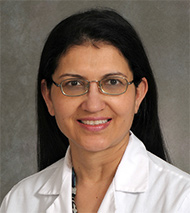 In December 2014, the Office of Faculty Affairs & Faculty Development in collaboration with the Association of American Medical Colleges (AAMC), launched the Teaching for Quality (Te4Q) program at our institution by hosting a two day workshop. Te4Q is a faculty development program that is also inclusive of staff and trains them in how to effectively teach quality improvement and patient safety (QI/PS) to medical students, residents, and other clinicians and staff. Te4Q was created by the AAMC in response to an identified gap in the education of students, residents, and practicing clinicians in quality improvement and patient safety. Te4Q also supports multiple national academic and clinical priorities for improved patient and health care outcomes, with an emphasis on progressive accreditation requirements (e.g., those of the Accreditation Council for Graduate Medical Education).
In December 2014, the Office of Faculty Affairs & Faculty Development in collaboration with the Association of American Medical Colleges (AAMC), launched the Teaching for Quality (Te4Q) program at our institution by hosting a two day workshop. Te4Q is a faculty development program that is also inclusive of staff and trains them in how to effectively teach quality improvement and patient safety (QI/PS) to medical students, residents, and other clinicians and staff. Te4Q was created by the AAMC in response to an identified gap in the education of students, residents, and practicing clinicians in quality improvement and patient safety. Te4Q also supports multiple national academic and clinical priorities for improved patient and health care outcomes, with an emphasis on progressive accreditation requirements (e.g., those of the Accreditation Council for Graduate Medical Education).
Through a combination of assessments, an on-site workshop, the development of an educational project, and expert mentoring, Te4Q equips clinical faculty to lead, design, and evaluate effective learning in quality improvement and patient safety across the continuum of medical education. Upon successful completion of the program, participants earn the AAMC’s Te4Q Certificate.
The Te4Q workshops were facilitated by Dr. David Davis, Senior Director, Continuing Education & Improvement, at the AAMC and Dr. Thomas Van Hoof, Associate Professor at the University of Connecticut.
The following is a list of faculty and staff participants in Te4Q and their educational projects
| Name | Department | Regulatory Compliance |
| Tahmeena Ahmed | Pathology | Regulatory Compliance |
| Cordia Beverley | Preventive Medicine | Reducing Health Care Disparities & Community Outreach |
| Laura Birney | Pathology | Leadership And Communication |
| Lenore Utnick-Bonanno | Cancer Center | Engaging Physicians And Staff |
| Dolores Cannella | Dental Medicine | School Of Dental Medicine Q And Ps Project |
| Latha Chandran | Pediatrics | SOM Curriculum for Q and PS:UME |
| Arvind Chandrakantan | Anesthesiology | Transitions Of Care |
| Laura Czulada | Pediatrics | Event Reporting And Feedback |
| Joseph Decristofaro | Pediatrics | QI Processes, Failure Mode Effects Analysis (FMEA) |
| Carrie Eckart | GME | QI & PS Involving GME |
| Laura Fochtmann | Psychiatry | Databases/Scorecards And It Support |
| Roderick Go | Internal Medicine | Lessons Learned-Case Based |
| Susan Lane | Internal Medicine | Communications by Physicians |
| William Lawson | Internal Medicine | QI Processes, Failure Mode Effects Analysis (FMEA) |
| Echezona Maduekwe | Pediatrics | Q Data Reporting and Benchmarking |
| Ronnie Mckinnon | Health Technology & Management | Finding and Reporting Diagnostic Errors |
| Donna Meltzer | Family Medicine | Preventing Harm |
| Joshua Miller | Internal Medicine | Information Technology : Q and PS |
| Laura Monahan | Pediatrics | Event Reporting and Feedback |
| Barbara Mills | Nursing | Inter-Professional Teamwork |
| Diane Klein-Ritter | Internal Medicine | Patient Transfers |
| Roseanna Ryan | Patient Care Advocacy | Patient Satisfaction |
| Carolyn Santora | Patient Safety & Regulatory Affairs | Just Culture and Culture of Safety |
| Fred Schiavone | Emergency Medicine | QI & PS Involving GME |
| Meenakshi Singh | Vice Dean, Faculty Affairs & Faculty Development | Leadership and Communication |
| Yvonne Spreckels | Community Relations | Cultural Competency Training |
| Francis Stellaccio | Anesthesiology | National PS Goals |
| Steven Zove | Dental Medicine | School of Dental Medicine Q & PS Project |
Introducing Carol Brenner, Ph.D., Program Director
I am pleased to announce the hiring of Dr. Carol Brenner as the inaugural Program Director in the Office of Faculty Affairs & Faculty Development. Dr. Brenner received her PhD from Tufts University and completed her postdoctoral fellowship, which was funded by the NIH, at the University of California at San Francisco.
Dr. Brenner comes to us from the Edward Via School of Osteopathic Medicine in South Carolina, where she served as the Founding Associate Dean of Biomedical Affairs and Medical Education. Previously, Dr. Brenner worked at Wayne State Medical School as a faculty member. She has taught students, residents and fellows and has had a successful career in medical research. Dr. Brenner has excelled in a variety of academic environments including underserved and minority student populations. She has extensive experience in, and success with, grant writing. She is a prolific writer with the ability to mentor individuals with their writing skills.
Meenakshi Singh, MD
I always knew that I would be a Pediatric Hematologist/Oncologist, even from the time I was in elementary school. I realize that such a specific career choice is unusual for a child so young, but this desire was undoubtedly shaped by my experience as a young girl who went through therapy for pediatric acute lymphoblastic leukemia (ALL) at a time when the majority of children with cancer did not survive. However, my choice of subspecialty is not simply about wanting to give back, but rather a fascination with the biology and research that is so integral to the field. My particular interests are both ALL and Survivorship issues after treatment for all pediatric tumors.
I grew up locally in Smithtown, where I attended Smithtown High School. I went to Cornell University as an undergraduate student, followed by Medical School at Stony Brook University. I loved the clinical, teaching and academic environment here so much that I decided to stay for my Pediatrics Residency. It was only then that I realized the intellectual challenges (and emotional rewards) that a Pediatric Hematology/Oncologist faces. I chose to train for fellowship at New York University, where I became an expert in both the clinical and laboratory biology of ALL, particularly relapsed ALL. Although the overall outcome for children with ALL is approximately 90%, ALL is still the number one cause of death from cancer in children, because of the challenges of relapsed disease. During my fellowship research years I focused on the genetic changes that occur between diagnosis and relapse, as these changes undoubtedly contribute to both relapse and the resistance to therapy that we see at relapse. In addition, I focused on the medical, psychological and social complications that survivors of pediatric cancer face.
When I was recruited back to Stony Brook University in 2010, I was quite fortunate to come as physician-scientist. My desire to return was not merely a desire to return “home”, but to be a part of the cutting edge medical and academic environment. In my lab, I continue to evaluate how the genetic alterations that I identified during my fellowship research directly affect chemosensitivity and tumor growth, as already two multi-institutional clinical trials were designed within pediatric consortia around the findings from my fellowship research. As a result of my expertise in the field, I was chosen to serve on the Protocol Committee for the Children’s Oncology Group’s upcoming relapse trial for B-precursor disease.
I also continue to focus on Survivorship issues at Stony Brook. I currently serve as Director of the Stony Brook Pediatric Oncology Survivorship Clinic. In addition to the multidisciplinary services provided, we have clinical research projects in several areas (bone density, renal function, immune recovery and psychosocial/educational outcomes after therapy). Nationally, I serve as Chair of the CureSearch Survivorship Council.
I started by saying that I always knew that I would be a Pediatric Hematologist/Oncologist, but to be honest, I really never envisioned my career as it is now, with such a strong research focus. Initially, I saw the career as a chance to enjoy the mutually rewarding patient-doctor interactions. For me, however, there is so much more to what I do. I am very grateful that Stony Brook Medicine and Stony Brook Children’s has given me the opportunity to enjoy the benefits of being a true physician-scientist.
In an effort to promote the contributions that residents and fellows are making to the Patient Safety and Quality Improvement initiatives at Stony Brook Medicine, the GME Office chooses to shine the spotlight on just a few of our Resident Leaders. There are countless stories to tell – let us introduce you to three this month.
Rajarsi Gupta, MD – Pathology Chief Quality Resident
Dr. Rajarsi “Raj” Gupta is a unique member of Stony Brook University Hospital. Joining the Department of Pathology as a resident in 2011, he came to Stony Brook Hospital after finishing his MD/PhD from the University of Illinois- College of Medicine at Urbana.
During his time here at Stony Brook Hospital Dr. Gupta has had eight publications, three presentations in Pathology conferences and is currently working on an Evaluation of Neoadjuvant Chemotherapy in Invasive Breast Cancer and on a Pathologic Complete Response (pCR) with Neoadjuvant Therapy in Breast Cancer. While there is no question that Dr. Gupta is an emerging leader in his field, it is his humble demeanor that is highly regarded by his colleagues and director Dr. Sonya Hwang. Raj has been quoted as saying, “I don’t look in the mirror and see a doctor” when describing himself and that “no matter is too small for Stony Brook” when discussing microscopic pathological specimens, he always goes the extra mile for cases that may seem otherwise challenging. For Raj, Pathology is a specialty focused on the patient and the critical information needed by other clinicians and the patients and their families in times of greatest need.
Jason Pollack, MD – Anesthesiology Chief Patient Safety Resident
Dr. Pollack has been an Anesthesiology resident since 2012, coming to Stony Brook Hospital after obtaining his undergraduate degree from Washington University in St. Louis and medical degree from Loyola University Stritch School of Medicine. As a second year medical student, he developed a passion for patient safety, where he was involved in perioperative reporting of patient’s medical status to provide better conditions for patients before, during and after operative procedures.
As Chief Patient Safety Resident, Jason has been extremely involved in our hospital wide patient safety and quality projects. He believes that resident physicians are the frontline and their involvement is crucial in order to identify problems as well as propose solutions. When asked about his passion for patient safety, Dr. Pollack stated “ It's exciting to see the changes when you work hard on positively impact your institution”. Currently, Dr. Pollack is working on a specimen time out in the operating room to ensure the proper removal, handling, and transport of surgical pathology specimens. Additionally, he is focusing on an interdisciplinary simulation with the Emergency Department, the operating room, the nursing staff and the Department of Anesthesiology.
Charles Miller, MD – Internal Medicine Chief Quality Resident
As Chief Quality Resident for Stony Brook’s largest residency, Chase Miller is an active member of Patient Safety and Quality Assurance efforts. Dr. Miller joined the Department of Medicine in 2011 after completing his medical training at St. George’s University. During his tenure at Stony Brook, he was elected to become part of the Internal Medicine Resident Advisory Committee and is currently the Resident Representative of the Executive Quality Council and an active member of the Telemetry Guideline Utilization Committee.
He believes that resident physician involvement in patient safety is beneficial to the resident in training as well as our institution as a whole. It allows “all front-line healthcare workers to learn about the steps that are taken on an institutional level so that we know why things are done the way they are”. Furthermore, he expressed that his role as a Chief Resident has given him an “extraordinary opportunity to make a tangible impact on the educational experience of the residents in our residency program and to advocate on their behalf”. In addition to his involvement at the institutional level, he is involved in many research projects in the Depart of Medicine, the Division of Cardiology and Cardiac Electrophysiology. Some of his current Clinical Quality Improvement projects investigate: Debriefing post Cardiac Arrest, Cardiology Ward Coverage Scheme, Patient Continuity in General Medicine Clinic. Dr. Miller is also involved in clinical research in Cardiac Electrophysiology as part of the Long Island Seafood Study Group. He is also investigating the effect of cardiomyopathy and other heart disease of maternal and fetal outcomes in pregnancy.
Given our recent spate of snow, ice, and frigid temperatures, Spring 2015 seems a distant dream. Spring 2018, then, seems even more so. Yet work is underway for our next Liaison Committee on Medical Education (LCME) reaccreditation site visit, which will take place in Spring 2018. In June 2014, LCME released a revised Standards framework and Data Collection Instrument (DCI). As of site visits beginning July 2015, the LCME documentation requirements are substantially changed with several additional requirements. One of these new requirements is that each medical school must have in place an ongoing procedure to monitor its compliance with the external LCME Standards. Here at Stony Brook School of Medicine, the Office of Undergraduate Medical Education has already developed and begun implementing an LCME Compliance Monitoring Program, which will prepare the way for our LCME site visit in 2018. The revised Standards framework consists of 12 broad standards with 92 subtopics. One member of the Dean’s Office staff has been assigned overall responsibility for each standard. Each subtopic has also been an assigned an “owner.” Beginning January 2015, each of the 12 Standards will be periodically discussed at the SOM Curriculum Committee meetings. The “standard leader” will update the committee on our strengths, weaknesses, and plan of action. The UGME Office (Ann Dowsey) is providing necessary administrative support for our LCME Compliance Monitoring program. Drs. Latha Chandran, Howard Fleit and Rick Iuli serve as the team leaders for this project, and Dr. Wei-Hsin Lu provides data collection, analysis, and distribution services to the program.
Stony Brook Cancer Center
When Jennifer Hofecker, MSA, was recruited to serve as the Director of Cancer Clinical Trials, it marked a turning point for Stony Brook. For the first time, all clinical trials with an oncology focus will be consolidated under one hub and overseen by Stony Brook Cancer Center. “This not only promotes a spirit of collaboration but also provides a different level of support for investigators,” explained Hofecker. “Our department will handle the myriad of administrative details — for example, study start-up, budget negotiations, financial accountability and reconciliation, data responsibility and quality assurance data responsibility — so that our physician-scientists can do the hands-on work of the study and take care of their patients.”
As the department grows, it will drive other changes as well. One is increasing the number of cancer clinical trials at the Cancer Center. Within the year, she expects the volume to double. “We want to grow the clinical trial portfolio by adding many “In particular, we want studies that are tailored for the patient population of Suffolk County so that we can make studies available where there is the highest need, for example, with breast cancer.” The team also will be providing encouragement and tangible support for investigator-initiated studies. This way, physicians with study ideas can come to Stony Brook Medicine and work with the team to develop a full protocol, seek funding and launch the study.
“We see this as one of our roles as an academic medical center,” Hofecker said. “We are using our resources to improve the health of our community.”
In December 2012, the ACGME Internal Medicine Milestones were published; eight out of the twenty-two were directly related to Systems-Based Practice and Practice-Based Learning and Improvement. We were appointed as Associate Program Directors and were charged with educating the Internal Medicine residents about Quality Improvement (QI) and Patient Safety (PS) and develop curricular innovations to meet the ACGME Milestones requirements.
The beauty of having very little experience and not realizing what can and cannot be done, is that you get a completely clean slate. It was no longer enough that graduating residents have medical knowledge and know how to take care of patients; they must also understand systems of health care delivery, metrics for outcomes of care, fundamentals of ensuring patient safety, and matters of cost utilization and efficiency. As educators, we have pledged to teach our residents these skills and assure the public that they will able to meaningfully engage in Quality Improvement and Patient Safety (QI/PS) after three years of residency. The training of residents and the expectations for their ability to engage in systems of care has completely shifted the paradigm, and we were given the unique opportunity to lead these efforts in our department.
Having no real experience in any of this, we started by filling in what we did not know. As new faculty, how do you go about learning to teach QI and Patient Safety? In whatever way possible: from online resources, interviewing people within the infrastructure of our organization, engaging in committees, attending conferences, and diving in and trying to it out directly in the form of QI and PS projects. Like everything else in medicine, learning about QI/PS must be experiential. We felt that in order to learn about QI and PS, the residents must actively do it, so we created a curriculum that directly immersed residents into the activities of QI/PS. From day 1 of residency, the interns are involved in QI projects in the clinic, and throughout the 3 years they learn to engage in processes from quality assurance through peer review, working with the clinic staff to implement workflow and policy changes, to filing PSNs and participating in productive Morbidity and Mortality conferences.
Over the past 2 years, and this year in conjunction with Dr. Bhumika Patel, our newly appointed PS/QI chief at the VA, we have developed the Internal Medicine QI/PS curriculum. We currently have a robust, longitudinal QI/PS curriculum that includes didactics, online Institute of Health Open School modules, and group ambulatory-based QI projects. The didactic curriculum ranges from topics as varied as basic methodologies in QI, institutional metrics for individual and hospital practice performance in the world of pay-for-performance, and quality in the context of national priorities laid out by the Institute of Medicine, Patient Centered Outcomes Research Institute and public campaigns such as Choosing Wisely. The didactics are interactive, workshop-style lectures, which offer the residents the opportunity to explore root-cause analyses and failure mode effect analysis (FMEA) based on our very own stony brook patient errors. In addition, the residents learn about the common cognitive biases we encounter in clinical practice and de-biasing strategies to improve errors. We have had institutional support, with the presentation of nine resident projects at the 3rd Annual Partners in Quality and Patient Safety Day in March 2014. The Patient Safety and Quality Council, led by Dr. Goolsarran, is comprised of peer-elected residents who collaborate on larger institutional quality initiatives. There have been objective successes in terms of academic output, but we believe that the real success is the excitement, motivation, and confidence that the residents now feel to carry out QI/PS work independently and their innovative ideas for the future.
As with everything that educators strive for in education, we ensure that the residents learn the material, but hope that they will also incorporate the material into their continuing practice, education and perspective in whatever institutions they head to in the future. We stress that beyond the scope of residency, they should remain reflective of QI/PS at all levels: as an individual physician level in their own practice, at the clinic or department level with projects to improve processes of care and at the institutional level, with an understanding and readiness to engage in the of the strategic vision for their organization.
19th Annual National Hispanic
Medical Association Conference
March 27-29, 2015
Marriott Wardman Park Hotel
2660 Woodley Road, NW
Washington, DC 20008 (202) 328.2000
http://www.nhmamd.org/
| 5/11/15 | 9th Annual Women in Medicine Research Day 10:00 a.m. until 12:00 p.m. HSC Galleria |
PHOTOS: COURTESY OF JEANNE NEVILLE, MEDIA SERVICES
If you wish to contribute to one of our future issues please contact



 Frederick M Schiavone MD,
Frederick M Schiavone MD,
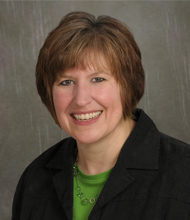 Catherine Eckert, MBA
Catherine Eckert, MBA